Preface
Measurement and Evaluation are two essential tools of teaching learning process. It is through measuring and evaluating process the effectiveness of learning experiences are identified and it is the only way by which a teacher can know how much successful his or her teaching was, what areas in teaching need improvement, etc. Similarly, a student can know at which position he or she stands in their classroom, and what are his or her learning difficulties and so on. Thus, in the process of learning. measurement becomes a tool for determining whether learning has occurred or not.
Measurement is a continuous process and is generated from our continued observations, both formal and informal, of change over time. Therefore, the teachers must become conscious of this aspect and develop a system of evaluation which reflects some form of regularity combined with impromptu observation and testing to ensure regular and constructive feedback to the learned. Although intuition and experience are helpful, specific skills are needed to develop effective measurement of learning. A teacher must be able to adapt and evaluate each means of assessment as it applies to the specific situation. Therefore, the main intention of bringing this book is to sow properly the seeds of the principles of Measurement and Evaluation in the becoming teacher so that when he became a full-fledged teacher he should be able to use the fruits of it in a meaningful way and become a successful teacher.
So in the context of these aims, in the 1 chapter, what is Measurement and Evaluation? What are Measurement Scales? What are the Types of Evaluation, when does we take-up the different types of evaluation, what are the main assumptions underlying basic educational measurement and evaluation, what is the basic philosophy and psychology of evaluation, and the main Purposes of Measurement and Evaluation are being explained.
In the 2nd chapter, what is a test and what is a testing? Important functions of a Test and Testing in Education, what are Assessment, Measurement and Evaluation and how they are related are being schematically explained. The importance and the purposes of internal assessment and External assessments are dealt in detail in this chapter.
In the 3rd chapter, Evaluation Tools and Techniques are explained, The types of Achievement tests based on Domain and Methods; various types of Achievement tests based on its of Mode of Response, its Purpose of Testing, its Desired Speed of Response, its Degree of Rigor Employed in Preparation and Scope of Applicability, its Mode of Interpreting Results and by its Format of Test Items are explained. Further Evaluation Techniques like – Anecdotal record, Cumulative record, Check-list, Rating Tech Questionnaire, Observation, Interviews, and Content analysis are explained in detail in this chapter.
In the 4th chapter, what are Psychological Tests? What are its Characteristics? What are the Assumptions of Psychological Tests? What are aptitude tests? Aptitude tests like- Abstract reasoning test, Verbal reasoning test, and Numerical reasoning test are explained.
What is Intelligence? What are Intelligence Tests? What is the history of intelligence testing? Intelligence tests like, Verbal Intelligence, Mathematical Intelligence, Spatial, Visualization, Classification, Logic, and Pattern recognition are explained.
What is personality? and what does it measure? Trait Theory: Origin Allport’s three levels theory of traits, Cattell’s Sixteen Personality Factor theory, Eysenck’s three Dimensions theory of Personality, and The Five- Factor Theory of Personality and their Strengths and Criticisms were dealt in detail in this chapter.
Further, Projective Tests like Rorschach Inkblot Test, Thematic Apperception Test (TAT), Children’s Apperception Test (CAT) and Other Personality Tests like Free Association, Dream Analysis, Word Association, Incomplete Sentences, and Graphology were also dealt in this chapter.
In the 5th chapter, the Ways to Measure Student Learning: through Written Tests by means of Selected Response Tests, Short-Answer Tests and Essay Tests or through Performance Tests like Direct Writing, Assessments, Portfolios, Exhibitions and Demonstrations are explained in this chapter.
In the 6th chapter, the Characteristics of Measuring Instruments – Validity and its types, Reliability and methods of finding Reliability. Objectivity, Comprehensiveness and Administrability are explained.









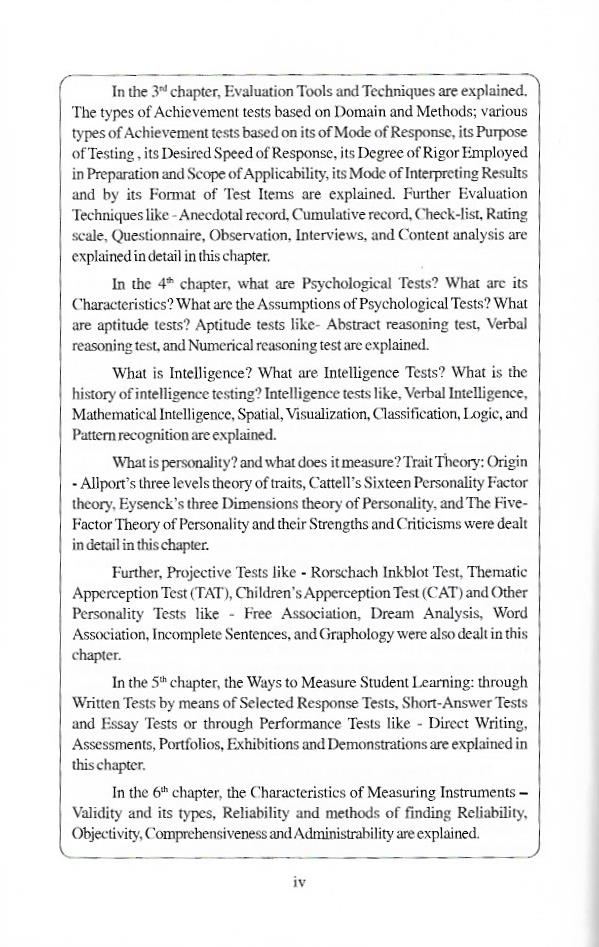
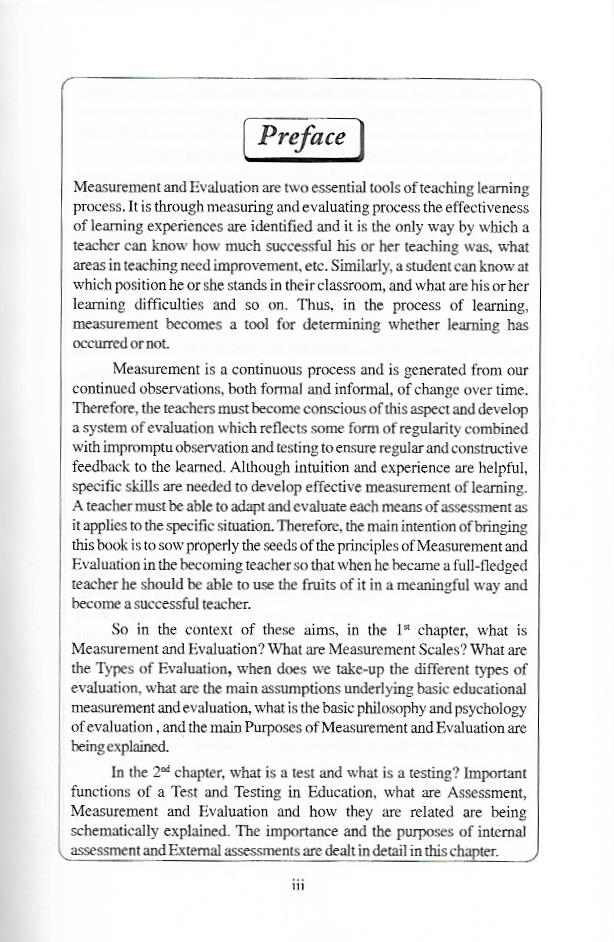

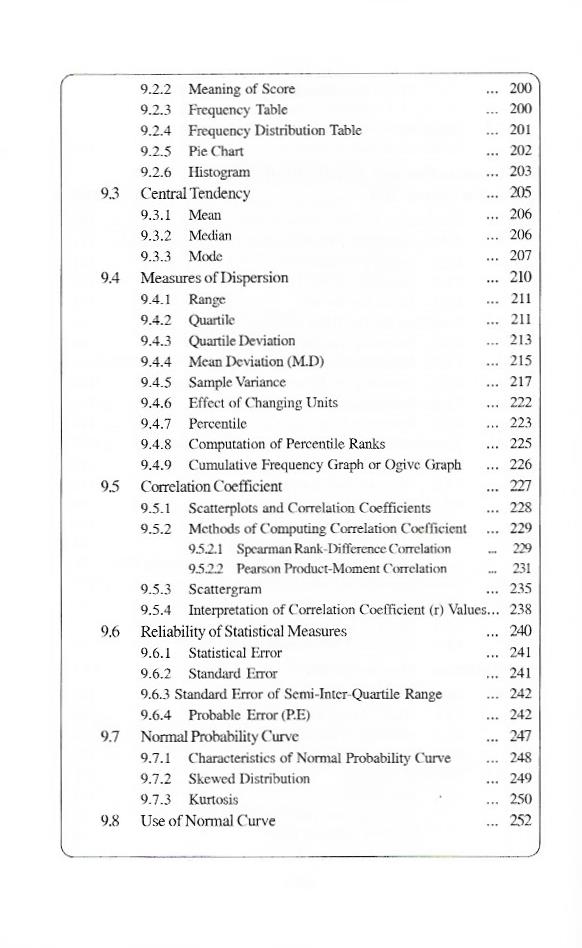

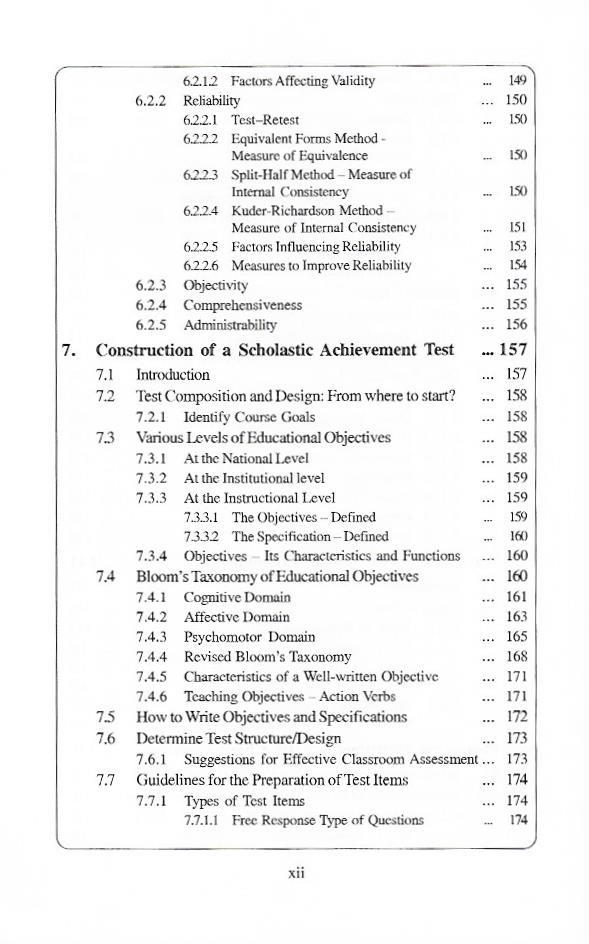


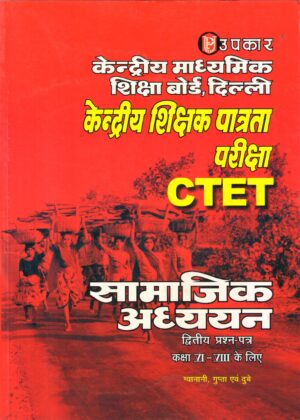

Reviews
There are no reviews yet.